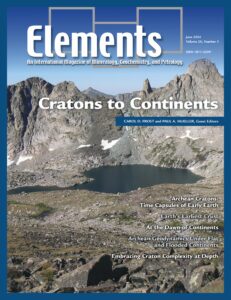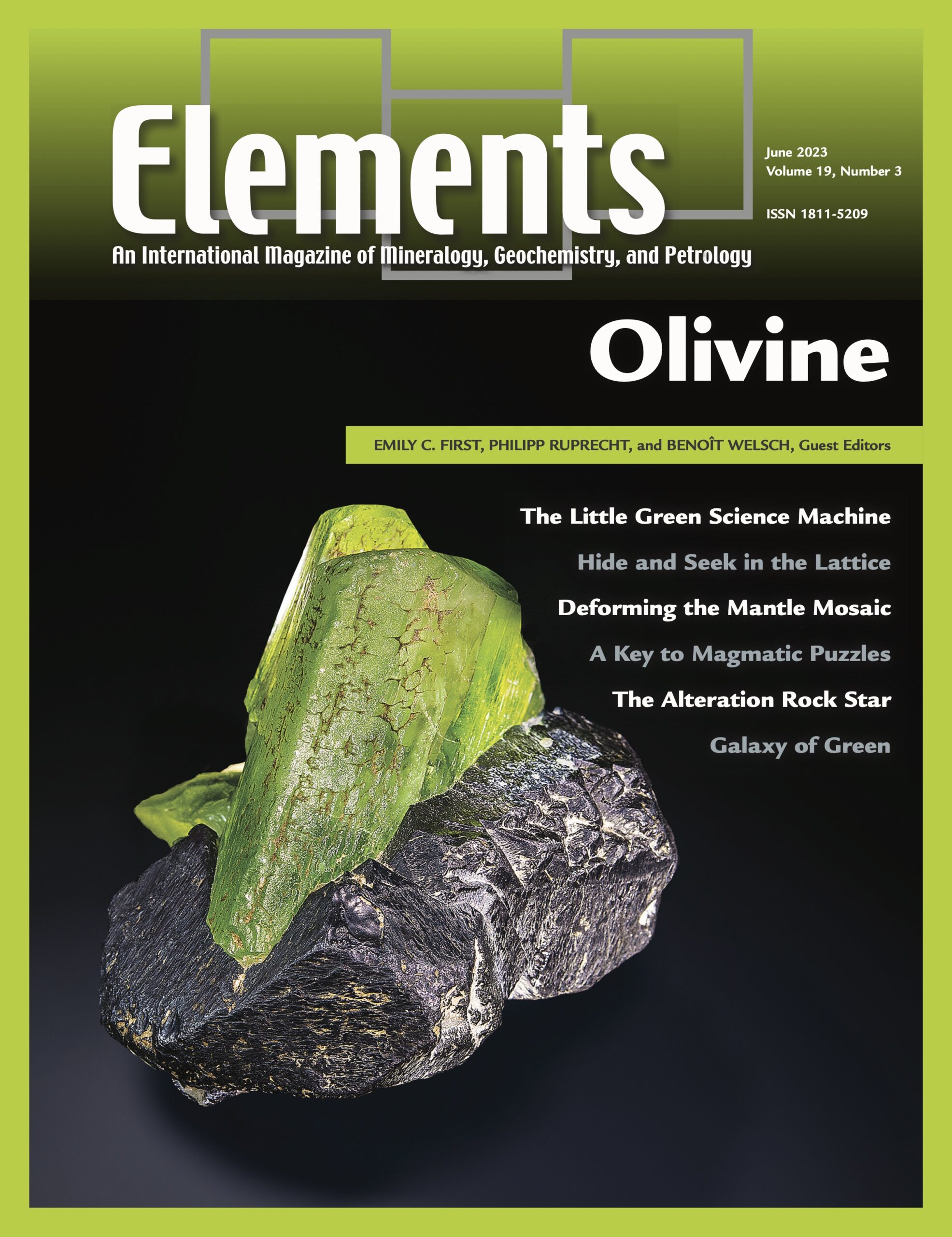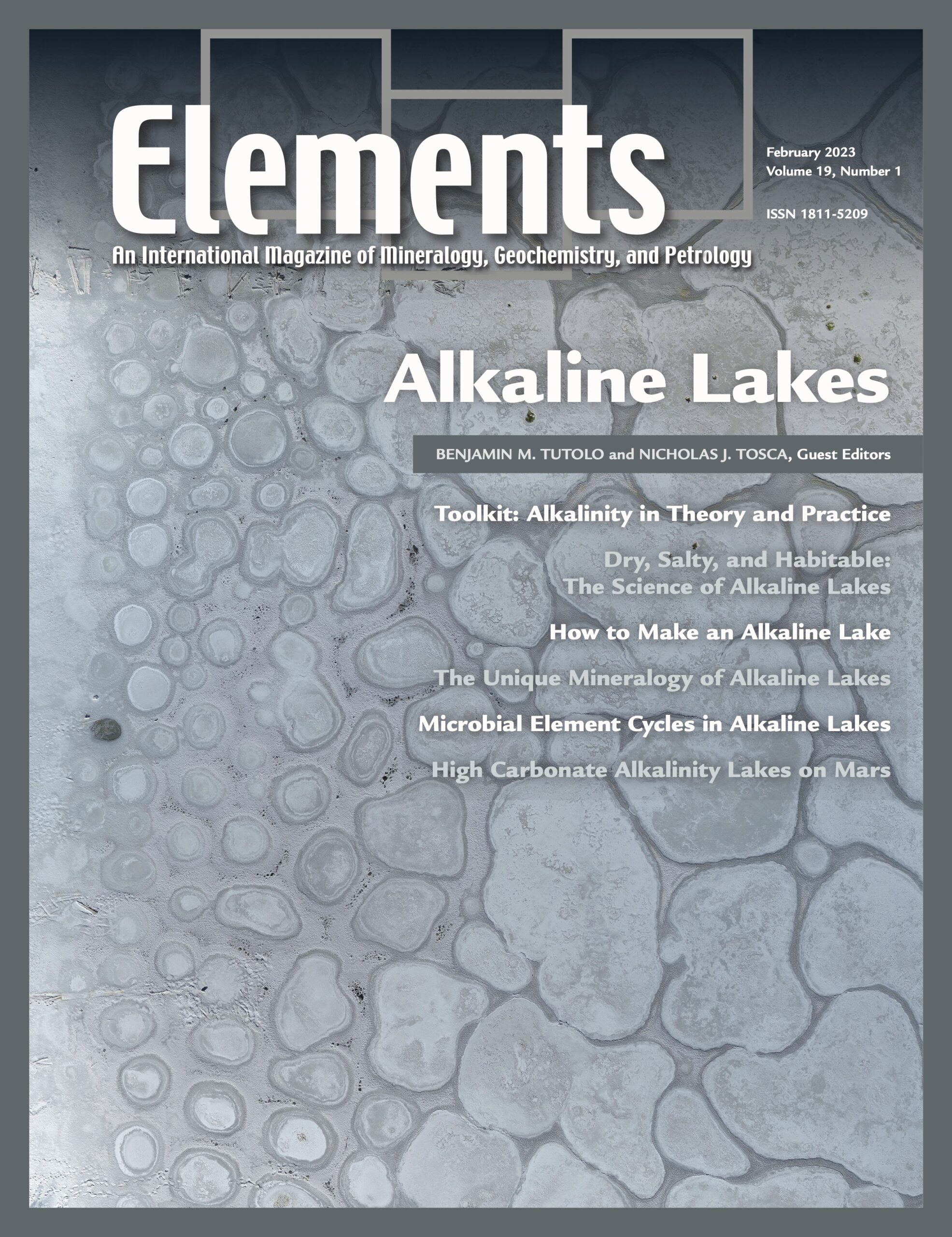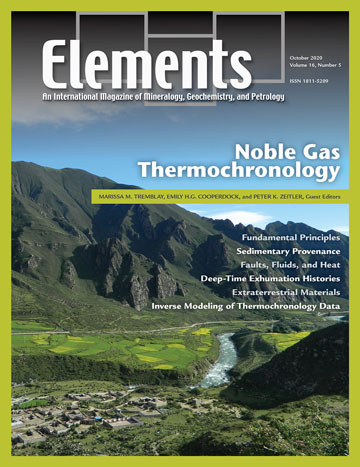Elements Toolkit
ARCHEAN CRATONS: TERMS, CONCEPTS, AND ANALYTICAL APPROACHES

The articles in this Elements issue highlight various aspects of the formation and evolution of the Earth’s earliest crust. This Toolkit includes a glossary of terms, concepts, and analytical approaches important to the study of Archean cratons to provide context for the methodologies discussed in these articles. Geologic timescales are rarely presented without compressing the Precambrian portion of Earth history. For this reason, it is easy to overlook the fact that the time between Earth formation and the end of the Archean at 2.5 Ga (billion years ago)—the time period covered by the articles in this issue—represents fully 45% of Earth history.
INNOVATING AND NETWORKING GLOBAL GEOCHEMICAL DATA RESOURCES THROUGH ONEGEOCHEMISTRY
By Alexander M. Prent, Dominik C. Hezel, Marthe Klöcking, Lesley Wyborn, Rebecca Farrington, Kirsten Elger, Lucia Profeta, Angus L. Nixon, and Kerstin Lehnert | June, 2023

A vision of the not-too-distant future: Imagine yourself as a researcher who is making plans for fieldwork in the Andes Mountains. You are behind your computer and load a three-dimensional visualisation of the Earth and its geology to investigate the research already done in the southern Patagonian regions. You zoom in to the mountain range of interest and select various data layers to show samples, their chemical and isotopic compositions, as well as rock ages for further reference. One area shows particularly young ages and a single click brings up an image showing the thermal and chemical evolution of the rocks, bringing to life the events experienced by that part of the Earth.
ALKALINITY IN THEORY AND PRACTICE
By Nicholas J. Tosca and Benjamin M. Tutolo | February, 2023

The articles in this issue highlight interdisciplinary approaches to the science of alkaline lakes, but one important concept links all of them together: alkalinity. Here, we discuss what alkalinity is, why it is important, and how it is typically measured. We review two different but complementary definitions of alkalinity that offer an intuitive starting point for understanding how this critical parameter responds to biogeochemical processes.
Measuring Noble Gases for Thermochronology
By Peter K. Zeitler and Marissa M. Tremblay | October, 2020

The articles in this issue show how applications of noble gas thermochronology can help answer fundamental questions about Earth and planetary processes. Here, we discuss how noble gas measurements are actually made. We review the different methods used to extract and isolate noble gases from natural materials and to measure those gas concentrations and isotopic compositions using mass spectrometry.

